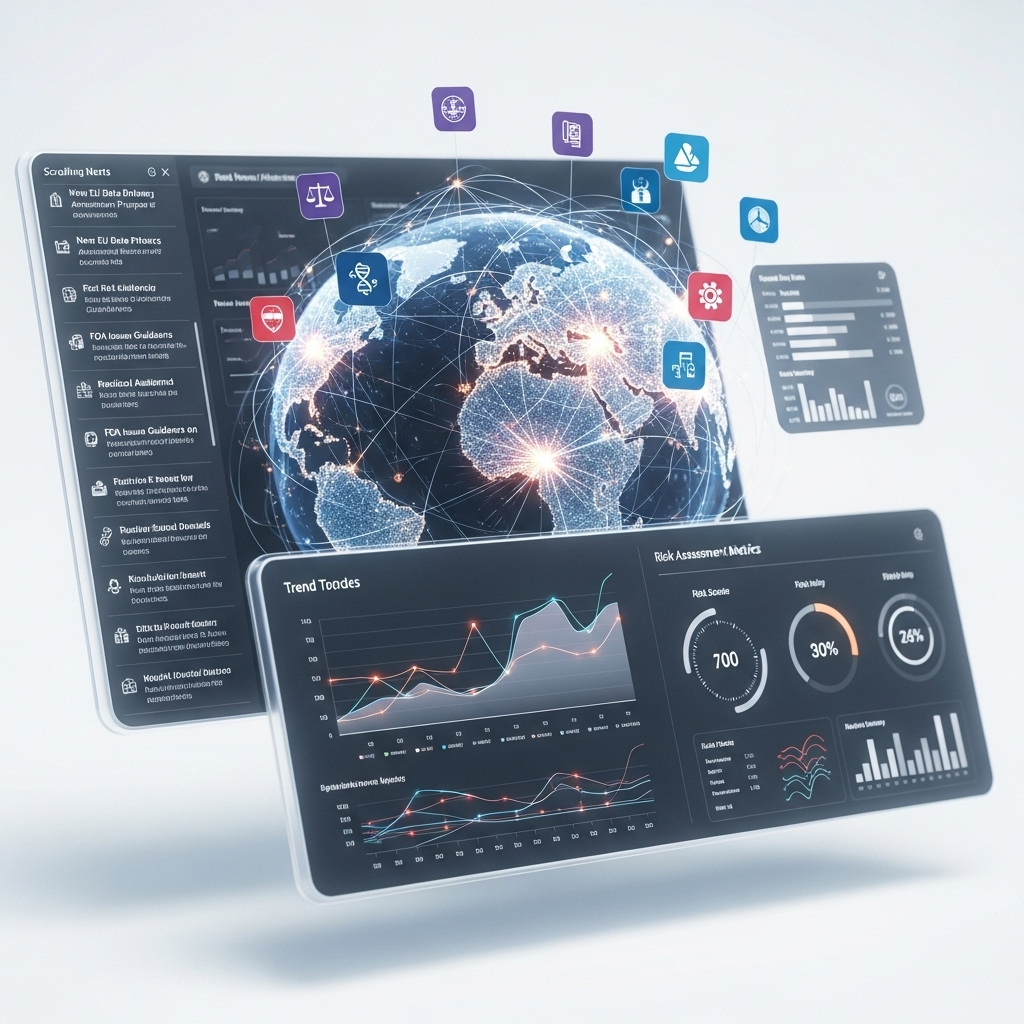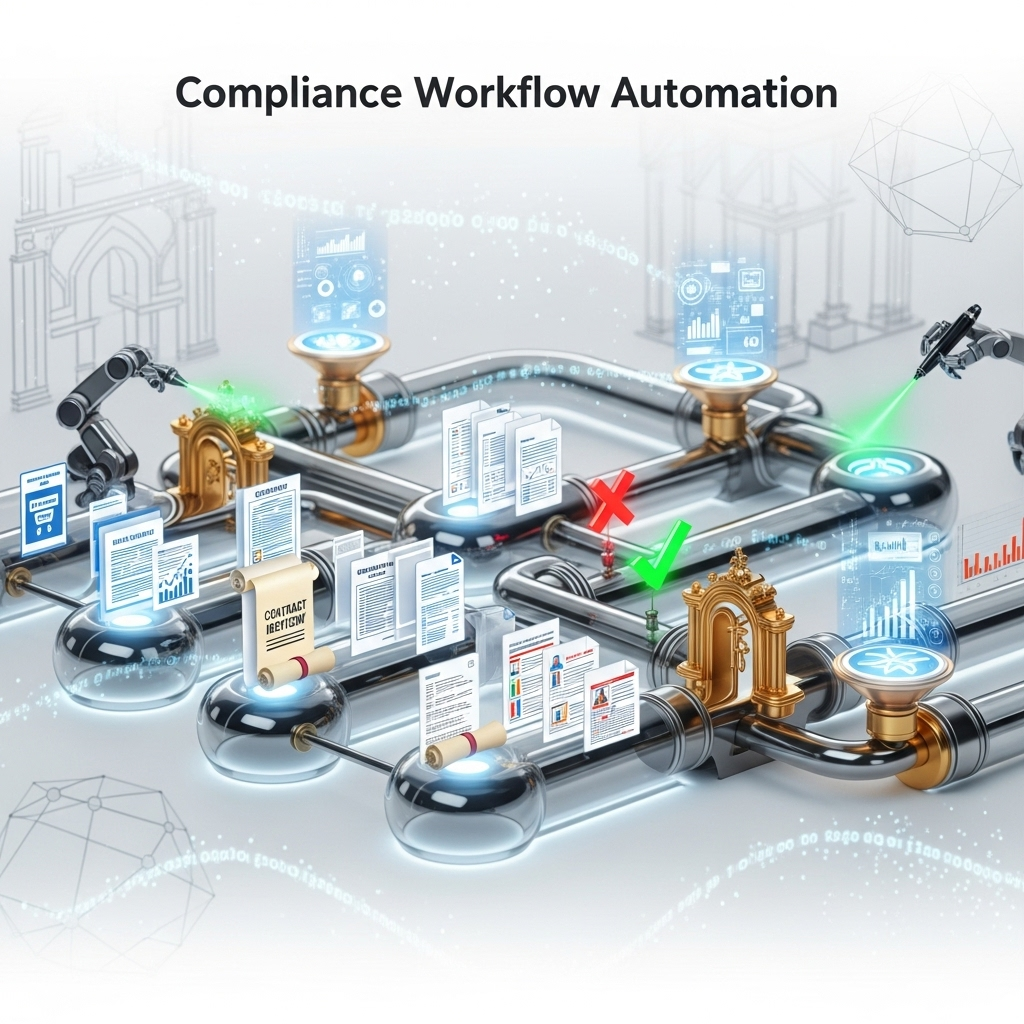Transform compliance from reactive to proactive with AI agents that predict violations before they occur and automatically implement mitigation strategies

Traditional compliance risk management is fundamentally reactive, identifying problems after they occur and implementing corrective measures to address violations that have already happened. This approach is not only costly but also exposes organizations to regulatory penalties, reputational damage, and operational disruption. The Predictive Risk Assessment and Mitigation Agent represents a revolutionary advancement that transforms compliance from a reactive discipline to a proactive strategic advantage through sophisticated AI capabilities that predict compliance risks before they materialize and automatically implement prevention strategies.
In the modern regulatory environment, compliance risks emerge from complex interactions between regulatory requirements, operational activities, market conditions, and organizational behavior. These interactions create risk patterns that are often invisible to traditional monitoring approaches but can be detected and predicted through advanced machine learning models trained on vast datasets of compliance outcomes across industries and jurisdictions.
The Predictive Risk Assessment and Mitigation Agent employs a sophisticated ensemble of machine learning models specifically designed to identify compliance risk patterns and predict potential violations across different regulatory frameworks and operational contexts. This multi-model approach combines various AI techniques to achieve superior prediction accuracy and robustness.

The agent's predictive capabilities are built on a foundation of multiple specialized machine learning models, each optimized for different types of risk prediction and analysis. This ensemble approach ensures robust predictions across diverse risk scenarios and regulatory environments.
The agent continuously ingests and analyzes data from multiple sources across the organization to maintain current risk assessments and identify emerging risk patterns. This comprehensive data integration provides a holistic view of organizational risk posture and enables accurate prediction of compliance issues.
Data sources include:
One of the most powerful capabilities of the Predictive Risk Assessment Agent is its ability to analyze behavioral patterns and identify early indicators of potential compliance violations. Through sophisticated behavioral analytics, the agent can detect subtle changes in user behavior, process execution, or system utilization that correlate with increased compliance risk.

The agent employs advanced pattern recognition algorithms to identify behavioral anomalies that might indicate emerging compliance risks. These algorithms understand normal operational patterns and can detect deviations that correlate with historical compliance violations.
The agent builds sophisticated models that predict the likelihood of specific types of compliance violations occurring under various conditions. These models are trained on historical violation data, regulatory enforcement actions, and organizational risk factors to achieve high accuracy in violation prediction.
Key modeling capabilities include:
Beyond identifying and predicting compliance risks, the agent automatically implements mitigation strategies designed to prevent violations before they occur. This proactive approach to risk management represents a fundamental advancement in compliance effectiveness and efficiency.

The agent employs a library of proven mitigation strategies that can be automatically implemented based on risk type, severity, and organizational context. These strategies range from simple preventive measures to complex workflow modifications designed to eliminate risk sources.
Mitigation strategies include:
When risks are identified, the agent orchestrates comprehensive response strategies that address immediate risk factors while implementing longer-term prevention measures. This orchestration ensures that risk mitigation efforts are coordinated, effective, and minimize operational disruption.
Instant implementation of preventive measures to eliminate immediate risk exposure
Automatic notification of relevant stakeholders with context and recommended actions
Comprehensive documentation of risk detection, analysis, and mitigation actions
Ongoing monitoring of mitigation effectiveness and risk level evolution
The agent's most sophisticated capability lies in its ability to identify complex relationships between seemingly unrelated factors that combine to create significant compliance risks. This cross-correlation analysis reveals risk patterns that would be impossible to detect through traditional monitoring approaches.
The agent analyzes relationships between multiple risk dimensions to identify complex risk scenarios:
The agent employs network analysis techniques to understand how risks propagate through organizational structures, processes, and relationships. This network perspective reveals critical risk nodes and pathways that traditional approaches might miss.

The agent maintains dynamic risk scores for all entities, processes, and activities within the organization. These scores are continuously updated based on new data, changing conditions, and evolving risk patterns to provide real-time visibility into organizational risk posture.
Risk scoring operates at multiple organizational levels to provide comprehensive risk visibility:
Risk scores are continuously adjusted based on:
The agent includes sophisticated scenario planning capabilities that enable organizations to understand how different business conditions, regulatory changes, or operational modifications might affect their risk profile. This capability supports strategic planning and risk management decision-making.
The agent can model risk implications under various scenarios:
The Predictive Risk Assessment and Mitigation Agent integrates seamlessly with existing organizational systems and processes to provide immediate value while building long-term predictive capabilities.
Implementation typically follows a structured approach that maximizes early value while building comprehensive capabilities:
The agent integrates with organizational systems through:
Organizations implementing predictive risk assessment achieve measurable improvements in compliance effectiveness and efficiency:
85% reduction in actual compliance violations through proactive risk mitigation
Average 45-day advance warning for potential compliance issues
70% reduction in compliance violation costs through prevention versus remediation
60% improvement in risk management resource allocation efficiency
Predictive risk assessment represents the future of compliance risk management, transforming organizations from reactive compliance followers to proactive risk leaders. As the technology continues to evolve, predictive capabilities will become increasingly sophisticated and valuable, providing organizations with unprecedented insight into their compliance risk landscape and the tools to manage risks before they become problems.
Organizations implementing predictive risk assessment today position themselves as leaders in compliance innovation while achieving immediate benefits through superior risk management and violation prevention. The continuous learning capabilities of the system ensure that early adopters gain maximum advantage from their investment in predictive compliance technology.
Experience the power of predictive compliance risk management. See how AI-powered risk assessment can transform your organization from reactive to proactive compliance leadership.
Discover Predictive Power